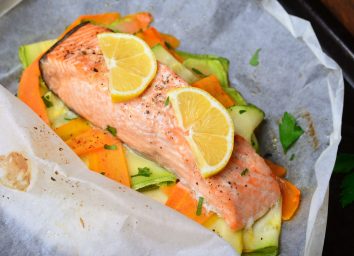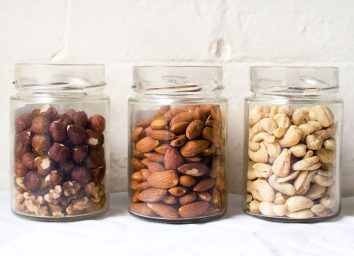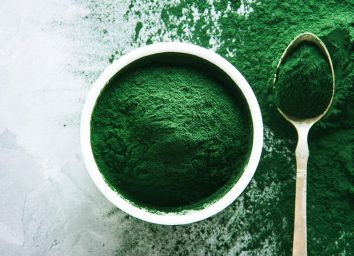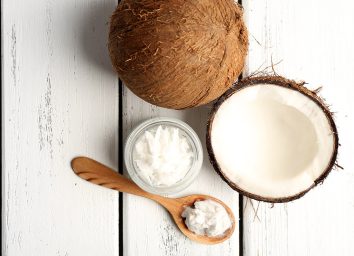Why Kelp Is Being Touted As The Next Superfood
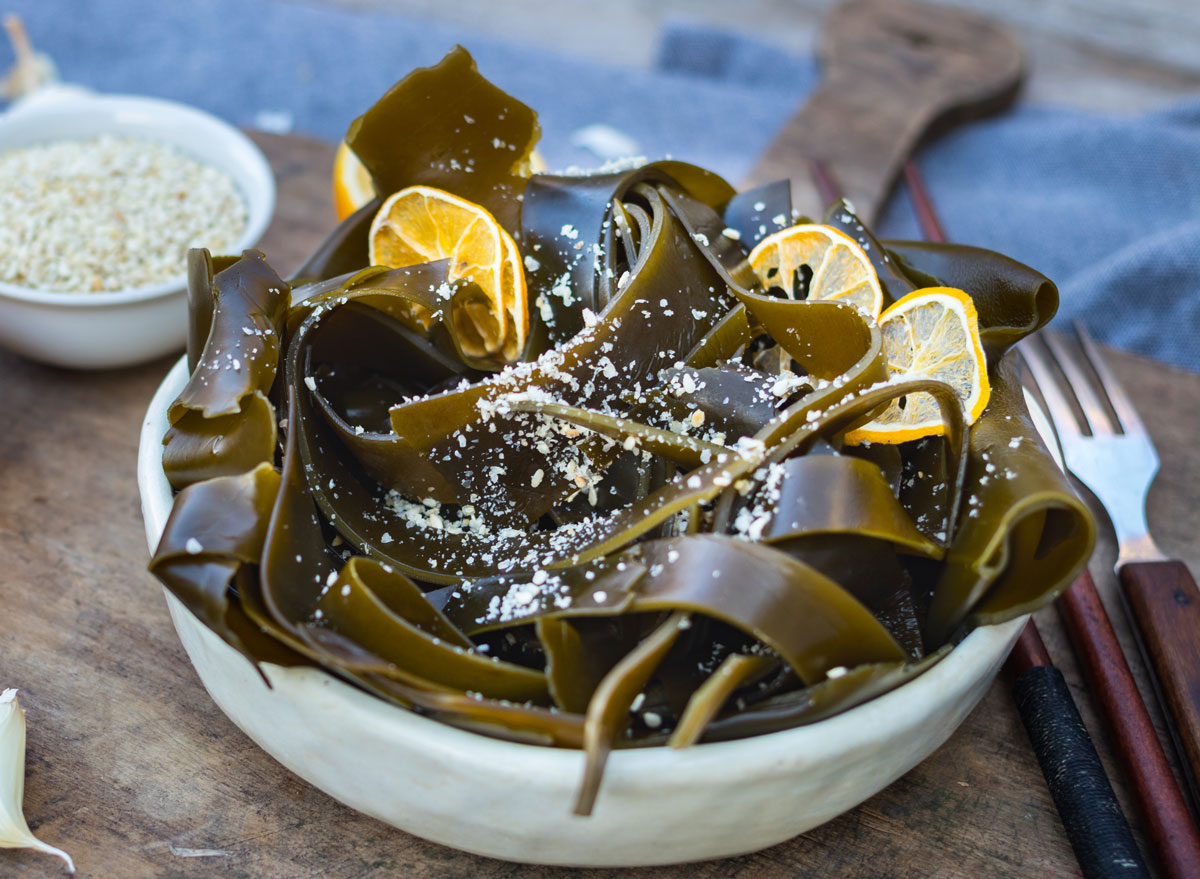
It seems like every day brings a new trendy superfood to the nutrition scene—most recently it’s been spirulina, collagen, and functional mushrooms. And now, kelp is the latest superfood to get the spotlight. The New York Times called it the “climate-friendly vegetable you ought to eat.”
What is kelp?
Sea kelp is a large ocean-growing seaweed that grows naturally in underwater forests. Recently, companies have started to farm and harvest kelp on the east coast of the US as well as in Europe.
“Many people are used to eating a seaweed salad from Asia, but this is local product (either in the Northeast—Maine, or in the Northwest [British Columbia to Northern California]) that can be added to a number of foods,” says Angel Planells, MS, RDN, Seattle-based registered dietitian nutritionist and national media spokesperson for the Academy of Nutrition & Dietetics.
What are the health benefits of kelp?
“Kelp is the new ‘it’ food,” begins Planells. “It is a nutritional powerhouse rich in many vitamins (A, B [especially B12], C, D, E, and K) and minerals (potassium, calcium, magnesium, nitrogen, zinc, copper, chromium, selenium and more),” she adds.
The sea vegetable earns its title as a superfood not just because it’s packed with vitamins and minerals, but also because it is rich in healthy fats and fiber.
“[Sea kelp] also may contain, depending on the environment it’s grown in, some plant-based omega-3 fatty acids (fish oils, but not of the fish-derived variety),” says Monica Auslander Moreno, MS, RD, LD/N, Miami-based registered dietitian and nutrition consultant for RSP Nutrition. “And since it is literally a grass, it also has a lot of fiber.”
Kelp has been studied for its anti-inflammatory properties, its ability to help those with diabetes that struggle with blood glucose levels, and also may aid in weight loss as an obesity treatment.
Eating kelp is both sustainable and good for the planet.
Kelp has notably gotten attention for its environmentally-friendly farming, so when you eat it, you can feel confident knowing you’re eating for the planet.
“In addition, kelp benefits ocean and planet health by removing excessive phosphorous, nitrogen, and carbon dioxide,” says Planells.
“It also is natural and easy to farm requiring minimal input—it grows 4-6 inches per day, can grow up to 150 feet long in one growing season, and requires no farmland, fresh water, or fertilizer,” Planells adds.
What does kelp taste like?
“Kelp is ‘wet’ and rather gelatinous; it’s almost as if grass had been pumped full of water and crossed with Jell-O—it’s definitely an acquired taste and texture,” says Auslander Moreno.
Since it’s grown in the ocean, you can expect kelp to be on the salty side.
“Kelp can taste very salty (like the ocean), or taste like a fresh oyster. It also can have a bit of an umami taste (natural Monosodium glutamate), which is a very savory taste,” says Planells.
How should you cook kelp?
If you like Japanese food, there’s a good chance you’ve already eaten it.
“You can eat it as a wakame salad at Japanese restaurants, and they sometimes cure it with miso,” says Auslander Moreno.
But if you’re looking to try it at home, you can find kelp in a variety of different preparations:
- Dried Kelp: After kelp is harvested, it can be dried quickly into sheets to be used in broth or added to stir-fries and rice.
- Powdered Kelp: Kelp powder can be used as a dietary supplement for bad breath and increased energy; as a natural ingredient in hair treatment masks for hydration; or as a natural fertilizer for plants.
- Kelp Granules: You can use kelp as a low-sodium salt alternative.
- Cooked Kelp: You can purchase cooked kelp in many forms, such as in low-carb pasta alternative, kelp noodles.
- Kelp supplements: Often times, people use kelp supplements for its high source of iodine, a nutrient necessary for a healthy metabolism.
- Raw: In its most natural form, kelp is farmed straight from the sea.
“Trying out kelp for the first time, you may opt for flakes or a powder if the kelp frond is distressing to you. Go out and explore different recipes—add it to soups, to salads, smoothies, and candy,” says Planells.
“Some cooks like to add it to dried beans to enhance the flavor (and it makes the beans less gassy!) Kelp noodles are gluten-free, and very popular for those who are sensitive to gluten.”
You can also start to find it popping up in some of your favorite store-bought foods. Daily Harvest, a subscription service that delivers pre-portioned cups of frozen superfoods (smoothies, chilled soups, microwaveable harvest bowls, and more) directly to your door, adds kelp to their Brussels Sprouts + Lime Pad Thai Harvest Bowl.
And while kelp can be eaten on it’s down, it’s also used to make a common food thickening agent—sodium alginate—which manufacturers use to thicken ice creams and salad dressings.
If you’re looking to dive into the kelp trend, there are a few things to keep in mind.
- Kelp is high in iodine. “One thing to be mindful of with kelp consumption is the amount of iodine it contains. Iodine recommendations are based on your age and gender—most adults need 150 micrograms per day. According to the National Institute of Health, a single sheet may contain 16 micrograms to 2,984 micrograms. [That] is either 11% or 1,989% of the recommended daily allowance,” says Planells. “So be mindful of your kelp consumption if you are pregnant or breastfeeding, or have any kidney or thyroid issues.”
- Make sure to buy natural when purchasing kelp. “Make sure you are getting wakame that hasn’t been dyed synthetically! Nobody wants extra chemicals,” says Auslander Moreno.
- Be mindful of sodium. If you are watching your sodium intake, you may want to skip kelp. “It is extremely salty,” says Auslander Moreno.
However, if you’re looking to add a flavorful vegetable to your diet that is packed with vitamins and minerals, you should give kelp a chance.
“The truth of the matter is that kelp can be a great food to try and introduce in a variety of ways,” says Planells. “Check out some recipes and give it a try. Indulge, but don’t over-do it.”
